Saturday, October 11, 2008
The HAI HONG Saga
(Click arrow to play)
By the end of 1978, there were nearly 62,000 Vietnamese ‘boat people’ in camps throughout Southeast Asia. As the numbers grew, so too did local hostility. Adding to the tension was the fact that several of the boats arriving on the shores of countries in Southeast Asia were not small wooden fishing craft but steel-hulled freighters chartered by regional smuggling syndicates and carrying over 2,000 people at a time.
-TIME magazine, Dec. 04, 1978
The 1500-tonnne m.v. Hai Hong was an old coastal vessel and a regular caller at Port Klang until one fateful night 30 years ago on November 9th 1978, when arriving at the southern pilot station, the ship's master coolly radioed my Pilot Office for permission to proceed in on her own and anchor in the harbour.
It was fortunate then that one of the office staff remembered reading in the newspapers that the vessel had been sighted at sea a few days earlier off the east coast, filled to the brim with refugees. He promptly ordered the ship to anchor near Pulau Pintu Gedung at the southern approaches of the port. There was also no advice from her local agents, so the police, immigration, customs, harbour master and port health authorities were quickly alerted.
The ship remained outside port limits under heavy guard for a few months while the Malaysian government decided what to do with the 2500-odd Vietnamese refugees living in very cramped and deplorable conditions aboard the tiny vessel. Food, water and medicine often ran short of supply and diseases were rampant.
After initially ordering the vessel to go back to wherever she came from, it was only due to representations from UNHCR and after the United States' Carter administration and a few other countries agreed to resettle them all that the refugees were finally brought ashore by the authorities. They were taken to a makeshift and fenced-in camp in Cheras, along the new north-south highway, which had been specially built for the purpose. From here, they were all then flown directly to the USA and elsewhere in small batches, but only after long drawn-out processes which took many months.
Meanwhile, the Hai Hong was brought in to anchor in North Shore at the entrance to the South Port where she remained for some time after the owners and crew had abandoned her. Tenders were out to auction and salvage her for scrap but there were no takers. The ship was subsequently towed and anchored at a site out of the way of shipping traffic, off Pulau Tonggok in Selat Lumut near the new bridge to Pulau Indah and leading to West Port and the Port Klang Free Zone. There she remained for a few years until one day she took in water and sank, very slowly, into her watery grave and disappeared completely from view.
I hear the site is now a favourite spot for weekend anglers in Port Klang.
P.S.: Sorry folks, but I was getting a bit cheesed off with the turn of events in the local socio-political scene that I decided to write about something else instead in the meantime ...
21 comments:
Dear Reader,
This blog promotes freedom of speech and I invite fair comment. This is not a chat room and I would appreciate if you could identify yourself. However, if you prefer to remain anonymous please note that remarks that are deemed grossly inappropriate, maliciously defamatory, extremely vulgar or ad hominem attacks (against my person) will be deleted.
Thank you for visiting and commenting.
The Ancient Mariner
Subscribe to:
Post Comments (Atom)


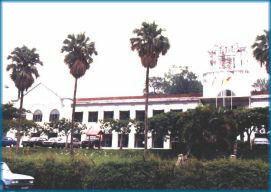
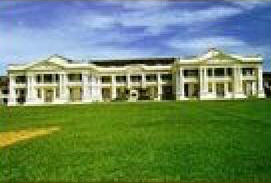
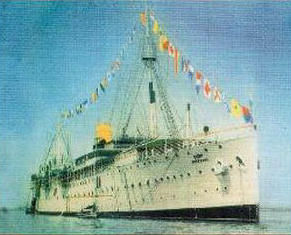





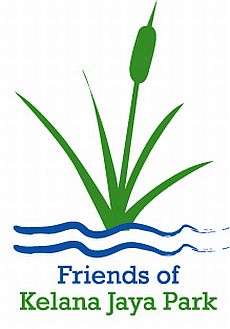
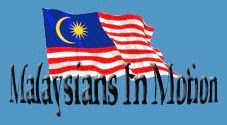




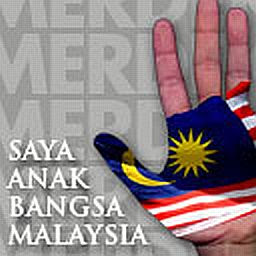





Salam Capt,
ReplyDeleteNice to read stories like these. I remember a bit about it but very vaguely. Was still in secondary school back then. But the name Hai Hong is so special because it became the nickname of one of my classmates.
Looking forward to more old-timer stories ;-)
Even Uncle Sam have a bigger heart.
ReplyDeleteClearly and vividly remembered the Hai Phong / Hai Hong from the news .
Hope they have a better live now .
Hi Capt!
ReplyDeleteOh those Hai Hong stories ....
The Hai Hong were actually very fortunate.
I've heard very credible reports (nope - I won't make any SDsof Malysian coastal villagers who become overnight pirates - they went out with their "arsenal" for the purpose of slaughter and acquisition of all Gold belonging to many Vietnamese who were fleeing slaughter at home!
Whatever the credibility of these reports may be, the brutality of these fisherman turned pirates were never addressed by our marine authorities ....
Apparently they were probably given tacit "assistance", so that the "authorities" were rid of "potential problems".
Sad, really ....
Ahoy,
ReplyDeleteI remember as a kid in a bus going past their camps, wondering why the Vietnamese refugees in Cheras climbed out of their camp, risking injury to self to put up banners like,...' we are not animals',..... and such like.
Some were incarcerated for a good many years weren't they? With no proper schooling etc...
Thank you sir for highlighting the fate of the Hai Hong.
ReplyDeleteI was a 9 year old on board the ship, now living in the US. I feel sad that she now lies at the bottom of the ocean, unwanted and unloved, after playing a big part in our voyage to freedom.
Tranh
Captain,
ReplyDeleteI can well understand your frustration at the turn of events which led you to look assunder and so this great Hai Hong recall.
I cannot help feeling the hidden message which for me seems most appropriate.
The only diffrence is the Hai Hong as rightly pointed out by reader Tranh from the US, died for freedom.
Whereas, the 'Hai Hong' political party in Malaysia may soon sink for taking freedom away for personal profit.
Anyway, Captain, we must NEVER relent in our quest for a better nation and better leaders. Otherwise, the mean and mighty only gain ground.
So, Captain keep the sail high for the tides have to change.
Good luck sir.
BandarSungaiLong
ReplyDeleteAye, Aye Capt!
Keep writing stories like this and other maritime stories so that land lubber like me would get to hear the going-ons on the high seas.
It is refreshing to have a different diet from the staple fares of the socio politico scenes.
Thank you for highlighting what happened thirty years ago and for refreshing our memories. Events like this would otherwise fade into oblivion.
capt.
ReplyDeletei love to read article like this -- based from your true experience -- not written in history book.
Dear Capt
ReplyDeleteI used to have an Vietnamese engineer working for while in Houston in 1999. Later I found out, much to my surprise, that he used to live in the Sg Besi camp and he was just a kid then. I guess he had made it good in the States. I am not sure though if he were a passenger on the Hai Hong. It is ironic that we probably have more Vietnamese in Malaysia now as guest workers than during those days.
salam uncle capt, jgn la merajuk lamer sgt ek..saya suka membaca posting uncle berkenaan ngan suasana politik di mesia n your support for a change of a new govt..but kekdg kena tuko angin gak kan...just to cool off mcm bro oldstock..skrg, post dier ader gak skit2 sentuh bab politik.. mcm alasan org lelaki la biler nk beristri dua..selalu sgt mkn sawi boring gak, sekali sekala nk jugak mkn kangkung...ehehehe
ReplyDeleteselamat hari raya, maaf zahir n batin
Mv Hai Hong was also ferrying many Chinese especially Fukienese, Cantonese, Hainanese, Teochew, et al to Penang Island and Butterworth more than 40 years
ReplyDeleteago.
The term Sinkeh or New Guests was used to describe these immigrants.
Sinkeh worked very hard as trishaw riders, rickshaw pullers, hawkers, coolies, stevedores, construction workers, earning between M$2.50 to M$5.00 per day; depending on nature and risks of work such as having to walk on narrow planks from tongkang tiang to wharf or climb narrow scaffoldings up the construction projects with heavy loads on their shoulders, etc.
Many also worked on junks called tongkang tiang carrying firewood charcoals.
Firewood charcoals were normally prohibited on steel crafts
because of its auto-combustion flashpoint when drenched in rain followed by heat, natural or by the sun.
I thought its Pulau Tengkorak instead of Pulau Tongkok dear captain?
ReplyDeleteex-TBA2 ex-SDH
Rewang;
ReplyDeleteIts Pulau Tonggok. Some locals used to call it Pulau Babi. The name was changed for obvious reasons.
Likewise Tg Mani is now Tg Harapan.
Name of Pulau Indah (Westport) was Pulau Lumut?
ReplyDeletePenang Tionghua:
ReplyDeleteYes. But some are now jokingly referring to it as Pulau India. If you have been to West Port you will know what they mean...heheh
I joined after you left. Before, joining my friends asked me whether I could take curry three times a day. I was lost, not knowing what he meant. Now, eureka!
ReplyDeleteAye capt,
ReplyDeleteUsed to swim (wade is more aptly put) from Marine Jetty to Bagan Hailam at low tides to catch Belangkas while my late father man the Kunci Air(s)
Hi Captain,
ReplyDeleteGood story on Hai Hong saga. Such unnecessary human misery due to ideology and human greed and wickedness. On hindsight, we Malaysian could have been more gracious by allowing them to earn a living until they find a new home. Used to drive by Cheras in 79 and 80 and pitied them. It could have happened to anyone of us here too.
jc121
This blog has not been changed for two months. Something amiss with the author?
ReplyDeletePenang Tionghua;
ReplyDeleteNothing's amiss. You just have to click on "Home" at bottom of page to bring you to current post... haha
heyho !!!, looks like amiss is over here, slow ahead or in the head, reaching the pantaloon stage... hahaha
ReplyDeleteGlad you are okay...
Selamat Hari Raya Haji!